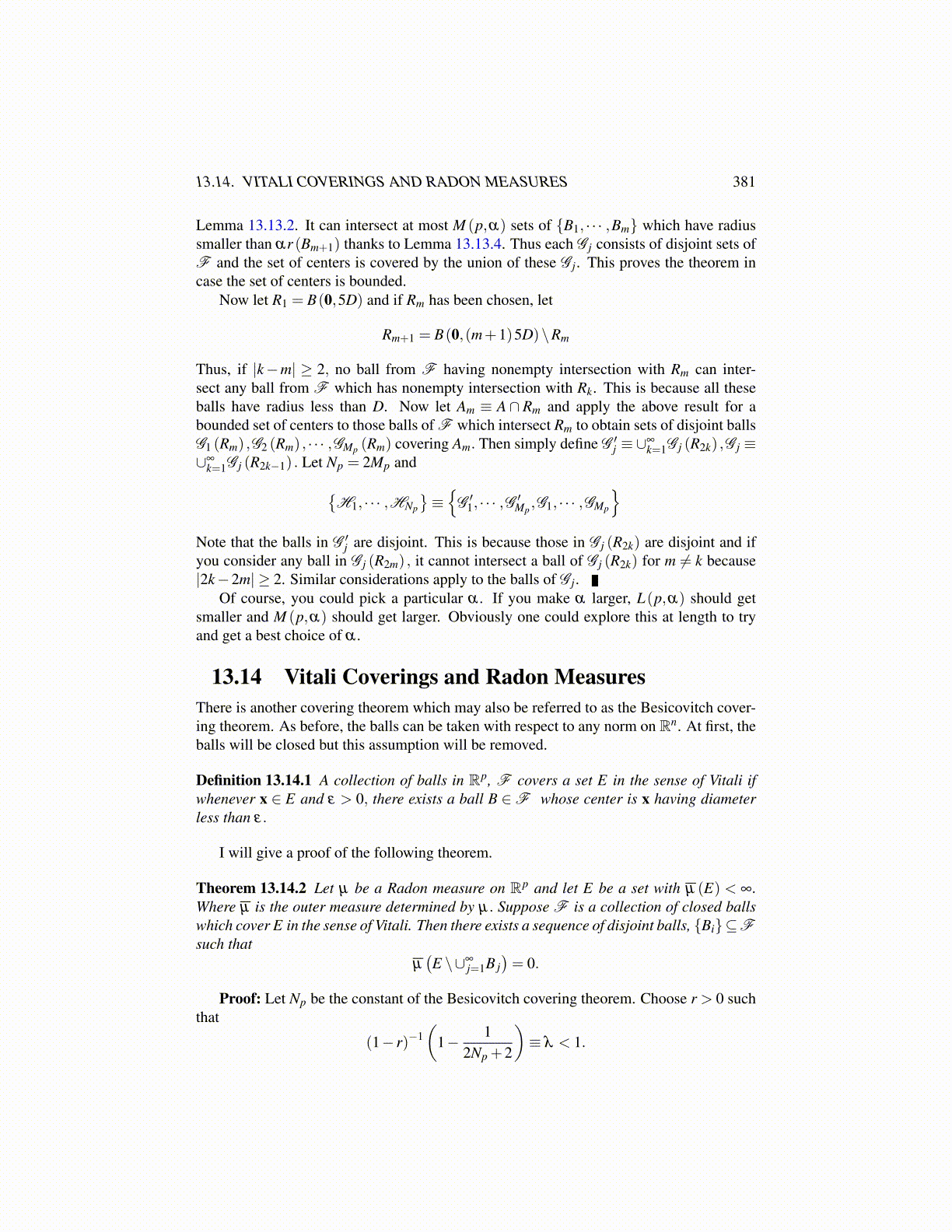
13.14. VITALI COVERINGS AND RADON MEASURES 381
Lemma 13.13.2. It can intersect at most M (p,α) sets of {B1, · · · ,Bm} which have radiussmaller than αr (Bm+1) thanks to Lemma 13.13.4. Thus each G j consists of disjoint sets ofF and the set of centers is covered by the union of these G j. This proves the theorem incase the set of centers is bounded.
Now let R1 = B(0,5D) and if Rm has been chosen, let
Rm+1 = B(0,(m+1)5D)\Rm
Thus, if |k−m| ≥ 2, no ball from F having nonempty intersection with Rm can inter-sect any ball from F which has nonempty intersection with Rk. This is because all theseballs have radius less than D. Now let Am ≡ A∩ Rm and apply the above result for abounded set of centers to those balls of F which intersect Rm to obtain sets of disjoint ballsG1 (Rm) ,G2 (Rm) , · · · ,GMp (Rm) covering Am. Then simply define G ′j ≡∪∞
k=1G j (R2k) ,G j ≡∪∞
k=1G j (R2k−1) . Let Np = 2Mp and{H1, · · · ,HNp
}≡{
G ′1, · · · ,G ′Mp ,G1, · · · ,GMp
}Note that the balls in G ′j are disjoint. This is because those in G j (R2k) are disjoint and ifyou consider any ball in G j (R2m) , it cannot intersect a ball of G j (R2k) for m ̸= k because|2k−2m| ≥ 2. Similar considerations apply to the balls of G j.
Of course, you could pick a particular α . If you make α larger, L(p,α) should getsmaller and M (p,α) should get larger. Obviously one could explore this at length to tryand get a best choice of α .
13.14 Vitali Coverings and Radon MeasuresThere is another covering theorem which may also be referred to as the Besicovitch cover-ing theorem. As before, the balls can be taken with respect to any norm on Rn. At first, theballs will be closed but this assumption will be removed.
Definition 13.14.1 A collection of balls in Rp, F covers a set E in the sense of Vitali ifwhenever x ∈ E and ε > 0, there exists a ball B ∈F whose center is x having diameterless than ε.
I will give a proof of the following theorem.
Theorem 13.14.2 Let µ be a Radon measure on Rp and let E be a set with µ (E) < ∞.Where µ is the outer measure determined by µ. Suppose F is a collection of closed ballswhich cover E in the sense of Vitali. Then there exists a sequence of disjoint balls, {Bi}⊆Fsuch that
µ(E \∪∞
j=1B j)= 0.
Proof: Let Np be the constant of the Besicovitch covering theorem. Choose r > 0 suchthat
(1− r)−1(
1− 12Np +2
)≡ λ < 1.